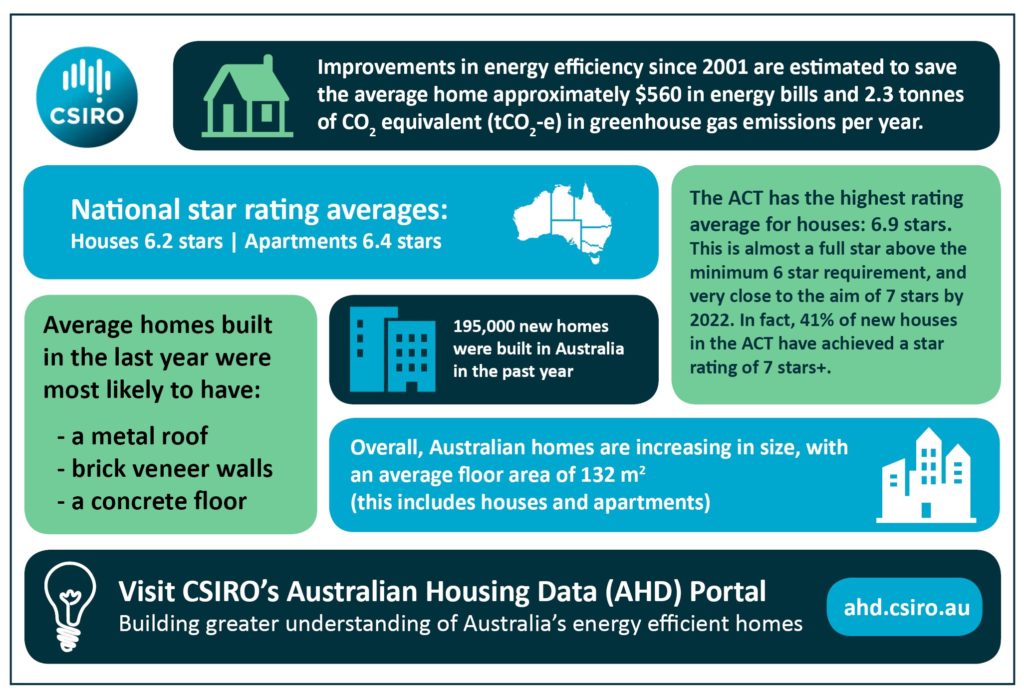Through the Australian Housing Data (AHD) Portal, CSIRO is centralising a vast amount of energy efficiency data that will underpin key decision making, training and awareness.
Around 11.4 per cent Australia’s emissions can be attributed to households, and with construction continuing at a steady pace, the AHD Portal can pinpoint where energy efficiency efforts are on track, and where they may need increased focus.
The AHD Portal will be an important tool in tracking and supporting the progress of the national plan agreed by COAG Energy Ministers that sets a trajectory towards zero energy (and carbon) homes in Australia.
Key findings drawn from the data (based on apartments and houses) includes:
- 195,000 new homes were built in Australia in the past year
- There is steady progress in building of high-performance homes, especially in Tasmania and the ACT
- Overall, Australian homes are increasing in size, with an average floor area of 132 m2 (this includes houses and apartments)
- Average dwellings were most likely to have a metal roof, brick veneer walls, and a concrete floor
- The average newly-constructed home had an energy rating of 6.2 stars. This is an improvement since the introduction of star ratings in 2001, when the average home was estimated at 1.8. This translates to an annual saving of approximately $560 in energy bills and 2.3 tonnes of CO2 equivalent (tCO2-e) in greenhouse emissions per house.

Data is chiefly sourced from the Nationwide House Energy Rating Scheme (NatHERS), a measurement and compliance system for energy efficiency administered by the Australian Government.
CSIRO Grids and Energy Efficiency Research Director Dr Stephen White said the data shows steady progress in residential sustainability efforts.
“In order to meet national challenges of sustainable energy and resilient cities, it’s vital that we track progress. As an independent research agency driving innovation in energy, particularly residential energy rating, CSIRO is well placed to do this,” Dr White said.
“Tracking these changes is an important step to ensure emissions goals are met, while seeing where more attention is needed across the industry.”
The portal contains data across states and climate zones and can be further broken down by design (e.g. dwelling class and floor area), construction (e.g. type of walls and roofing) and fixtures and appliances (e.g. solar PV and heating/cooling systems).
The construction of homes varies somewhat from state to state, reflecting the flexibility of the NatHERS software to meet both the variations in climate and product availability in each jurisdiction.

CSIRO will update dashboards within the AHD Portal monthly, ensuring it is a relevant and accessible tool for the benefit of residential energy efficiency stakeholders, nationally.
